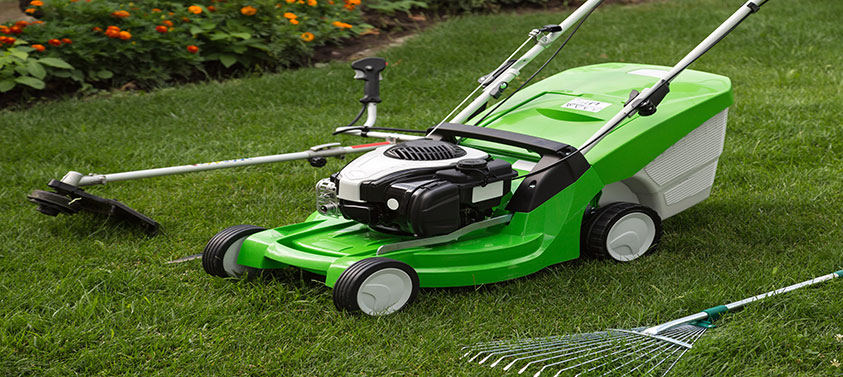When you think of a petrol lawnmower, you might picture a tough, growling machine tearing through thick, overgrown grass. But beneath the powerful sound and physical bulk lies a finely tuned system of components working in harmony to perform one of gardening’s most essential tasks. Understanding how a petrol lawnmower works helps you appreciate not just its capabilities, but also its design, efficiency, and reliability.
At the heart of every petrol lawnmower is the internal combustion engine, a mechanical system designed to convert fuel into movement. This compact but powerful engine is what sets petrol mowers apart from their electric and battery-powered counterparts. It gives the machine the strength to power through uneven terrain, dense lawns, and large gardens with consistent force and without limitation from a power cord or battery life.
The fundamental process behind a petrol lawnmower’s engine is the four-stroke combustion cycle, sometimes called the “Otto cycle.” This includes four key stages: intake, compression, power, and exhaust. Each stage plays a vital role in generating the motion that ultimately turns the mower’s blade—and sometimes its wheels, too.
The process begins when you pull the starter cord (or press a button in electric-start models), which initiates the first stroke of the cycle. During this intake stroke, the piston moves down the cylinder, creating a vacuum that draws in a mix of petrol and air through the intake valve. This fuel-air mixture is crucial—it’s the explosive combination that will drive the engine forward.
Next is the compression stroke, where the piston moves back up, compressing the fuel-air mixture into a tight space inside the cylinder. Compression increases the potential energy of the mixture and makes it more volatile, preparing it for ignition. At the top of the compression stroke, the spark plug fires a timed electric spark that ignites the mixture.
The resulting explosion creates a rapid expansion of gases, forcing the piston downward again. This is known as the power stroke. It is the heart of the entire system, as this motion converts chemical energy (from the fuel) into mechanical energy. This downward motion is transferred via the crankshaft, which turns the rotary blade located underneath the mower deck. If the mower is a self-propelled model, part of this energy is also diverted to the drive wheels.
Finally, in the exhaust stroke, the piston moves upward once more to expel the used gases through the exhaust valve. The cycle then repeats at high speed, with this entire process occurring dozens of times every second. It is this rapid cycling that powers the mower, allowing it to cut efficiently and consistently.
The simplicity of this engine design belies its power. Because it doesn’t rely on external electricity or batteries, a petrol lawnmower can run for extended periods on just a tank of fuel. This is especially useful for larger gardens or professional landscaping jobs where uninterrupted operation is a must. And thanks to the high torque generated during the power stroke, petrol mowers are capable of slicing through thick or wet grass that might clog or stall an electric mower.
In self-propelled models, the engine also drives a set of transmission gears connected to the wheels. This function is completely mechanical, often using a belt or chain system similar to what you’d find in a bicycle or car. The engine’s crankshaft is linked to the drive system, meaning that as the engine spins, it turns not only the blade but also propels the mower forward. The speed may be fixed or variable depending on the model, and in advanced designs, users can control the pace with a lever or throttle for greater comfort and flexibility on sloped or uneven ground.
Petrol lawnmowers also feature carburettors, small devices that regulate the fuel-air mix going into the cylinder. The correct mixture is critical: too much fuel and the engine runs rich, wasting petrol and emitting excess smoke; too little fuel and the engine runs lean, leading to overheating or stalling. Modern carburettors are highly efficient, often equipped with choke systems that make cold starts easier. Some newer petrol mowers even incorporate fuel injection systems for even better performance, similar to those found in motorcycles or small cars.
Cooling systems are also vital to how a petrol mower functions. As the engine operates, it generates a considerable amount of heat. To prevent overheating, most engines are air-cooled with fins and fans that dissipate heat away from the cylinder. Regular airflow around the engine is essential for maintaining optimal temperature and performance. This is why keeping your mower clean and free of debris is so important—clogged airways can lead to overheating and engine damage.
Maintenance is a key part of keeping this sophisticated system running well. A petrol lawnmower requires oil changes, air filter cleaning, spark plug replacements, and occasional carburettor tuning to stay in top shape. Though this might seem like a drawback compared to the “plug and play” nature of electric mowers, it’s also what makes petrol mowers longer-lasting and more serviceable. Parts can be replaced or repaired locally, and the engine can often be brought back to life even after years of dormancy.
When properly maintained, the design and function of a petrol mower’s engine allow it to outlast and outperform many of its rivals. It thrives in environments that would strain or overwhelm other machines. Long grass, damp soil, rugged terrain, and extended operating sessions are all easily handled by a robust petrol mower. The secret lies not in brute force, but in a century-old engine design that still proves its value today.
Not all petrol mowers are built the same, of course. Choosing a model with the right engine capacity (usually measured in cubic centimetres or cc) will impact performance. A mower with a 125cc engine might be suitable for small to medium lawns, while one with a 190cc engine is better equipped for large properties or thick turf. Blade width, cutting height adjustment, and grass management options such as mulching or side discharge also tie into how efficiently the engine’s power is used.
Petrol mowers are often favoured by professionals and experienced gardeners because they deliver reliable, raw performance that requires less compromise. For those who understand their inner workings, they are also incredibly satisfying machines to own and operate. Knowing that each turn of the blade is powered by a precise explosion in a compact engine cylinder only deepens your appreciation for their engineering.
For those in search of expert advice or quality machines, Ron Smith remains a trusted name in the industry. Their range of petrol mowers includes models suited for casual users and professional landscapers alike, supported by knowledgeable service and dependable aftercare.
Ultimately, a petrol lawnmower is more than just a garden tool—it’s a well-engineered machine built for performance, endurance, and efficiency. Whether you’re maintaining a small lawn or a sprawling estate, understanding how these engines work helps you choose, maintain, and get the most out of one of the garden’s most indispensable machines.








